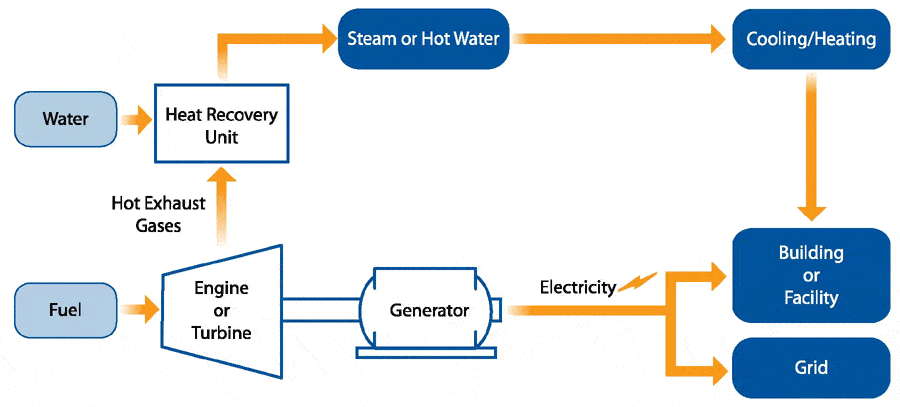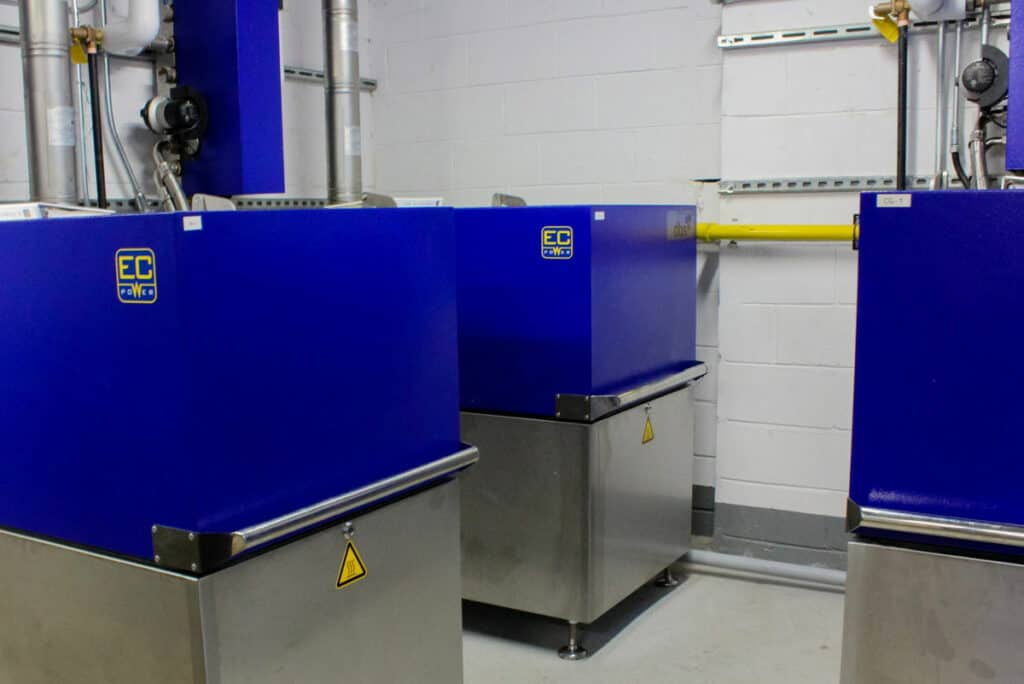Combined heat and power (CHP) works efficiently by using natural gas to generate power. Understanding how and where CHP works best is can help make sure your company gets the most out of its system. Now is the perfect time consider installing a CHP unit of your own in order to leverage the 10 percent CHP federal tax credit. Facility owners and managers have January 2022 to take advantage of this financial incentive and the other benefits that come with CHP installation.
What is CHP?
CHP or combined heat and power is best known for its ability to capture heat that would otherwise be wasted and then turn that heat into thermal energy for the system owners use. CHP systems can achieve efficiencies of over 80 percent, compared to only 50 percent efficiencies that conventional electricity and on-site boilers can achieve. This is because nearly two-thirds of energy used in conventional electricity generation is discharged into the atmosphere and wasted.
How CHP Works
Like a typical generator, a CHP unit uses natural gas a fuel to produce power. A CHP unit differs from a typical generator with its implementation of a waste heat recovery system. This system rovers the excess energy released in the power generation process, like steam or hot water, and utilizes it for heating conditioned spaces during colder periods, cooling spaces, domestic hot water and industrial processes. Energy that would otherwise be wasted is used to heat your facility while the CHP unit produces electricity. There are two common configurations of CHP systems: combustion turbine, or reciprocating engine, with heat recovery unit and steam boiler with steam turbine.
The first configuration combustion turbine, or reciprocating engine, with heat recovery unit, burns natural gas to turn generators that produce electricity. It uses heat recovery devices to capture heat from the engine or turbine and then converts it into useful thermal energy.

The second configuration of CHP is a steam boiler with steam turbine. The process begins with producing steam in a boiler and then using it to turn a turbine in order to run a generator and produce electricity. Excess steam leaving the turbine is used to produce thermal energy.

Where CHP works best
CHP works and is currently used in over 4,000 facilities nationwide in commercial, residential, municipal and manufacturing industries. CHP works best in facilities with a need for electricity and thermal energy generation. It benefits companies and facilities with high demand charges on utility bills more than ones with low demand charges by significantly reducing these charges. Taller buildings like apartment complexes, hotels and downtown facilities typically have the correct building profiles to reap the benefits of CHP. Having one central heating system also creates ideal situation for CHP systems to thrive since they work in conjunction with a building’s boiler system to reduce the strain on it.
Interested in installing a commercial CHP system?
Take advantage of all the benefits CHP systems have to offer including higher efficiency levels and lower utility bills by beginning the installation process today. EnergyLink’s team are experts on how CHP works and will guide you through every step of the process. Click the link below to get a free quote or speak to a team member at (866) 218-0380.






